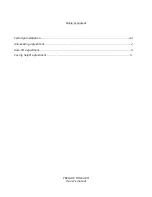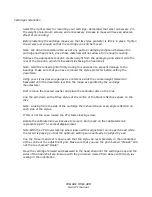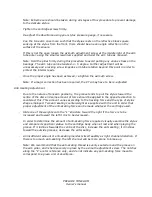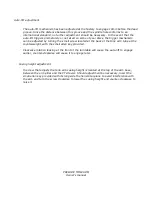
Note: Extreme care should be taken during all stages of this procedure to prevent damage
to the delicate stylus.
-
Tighten the cartridge screws firmly.
-
Re-adjust the downforce using your stylus pressure gauge, if necessary.
-
Cue the tone arm once more such that the stylus rests on the reflective black square.
Looking at the stylus from the front, there should be an even angle reflection on the
surface of the square.
-
If this is not the case, loosen the azimuth adjustment screw at the middle right of the arm
tube pillar, using the small screwdriver supplied and twist the arm tube as required.
-
Note: Hold the pillar firmly during this procedure to avoid putting any undue stress on the
bearings. The arm tube can be t/- 5 degree. Further adjustment will be
unnecessary and a locking screw impedes arm tube rotation beyond this point in order to
protect the interior leads.
-
Once the proper angle has been achieved, re-tighten the azimuth screw.
-
Note: If a major correction has been required, the VTA may have to be re-adjusted
Anti Skating Adjustment
-
Due to the nature of tonearm geometry, the groove tends to pull the stylus toward the
centre of the disc and some amount of force should be applied in the opposite direction to
counteract this. This amount varies according to the tracking force and the type of stylus
shape employed. Two anti skating counterweight are supplied with the unit in order that
proper adjustment of the anti-skating force can be made whatever the cartridge used.
-
Slide one of the weights onto the “L” structure toward the right if the force is to be
increased and toward the left it it is to be decreased…
-
In order to determine the amount of anti-skating force required visually examine the stylus
and compare its position relative to the cartridge body when at rest and when playing the
groove. If it inclines towards the centre of the disc, increase the anti-skating; if it inclines
toward the outside grooves, decrease the anti-skating.
-
An insufficient amount of anti-skating manifests itself audibly as right channel distortion. If
there is too much anti-skating, the left channel will be more prone to break-up
-
Note: We recommend that the anti-skating thread is evenly seated around the groove on
the arm pillar, and is held securely in place by the azimuth adjustment screw. The notches
along the “L” are for reference only, and do not indicate any anti-skating force meant to
correspond to a given unit of downforce.
PRELUDE TONE ARM
Owner’s manual























